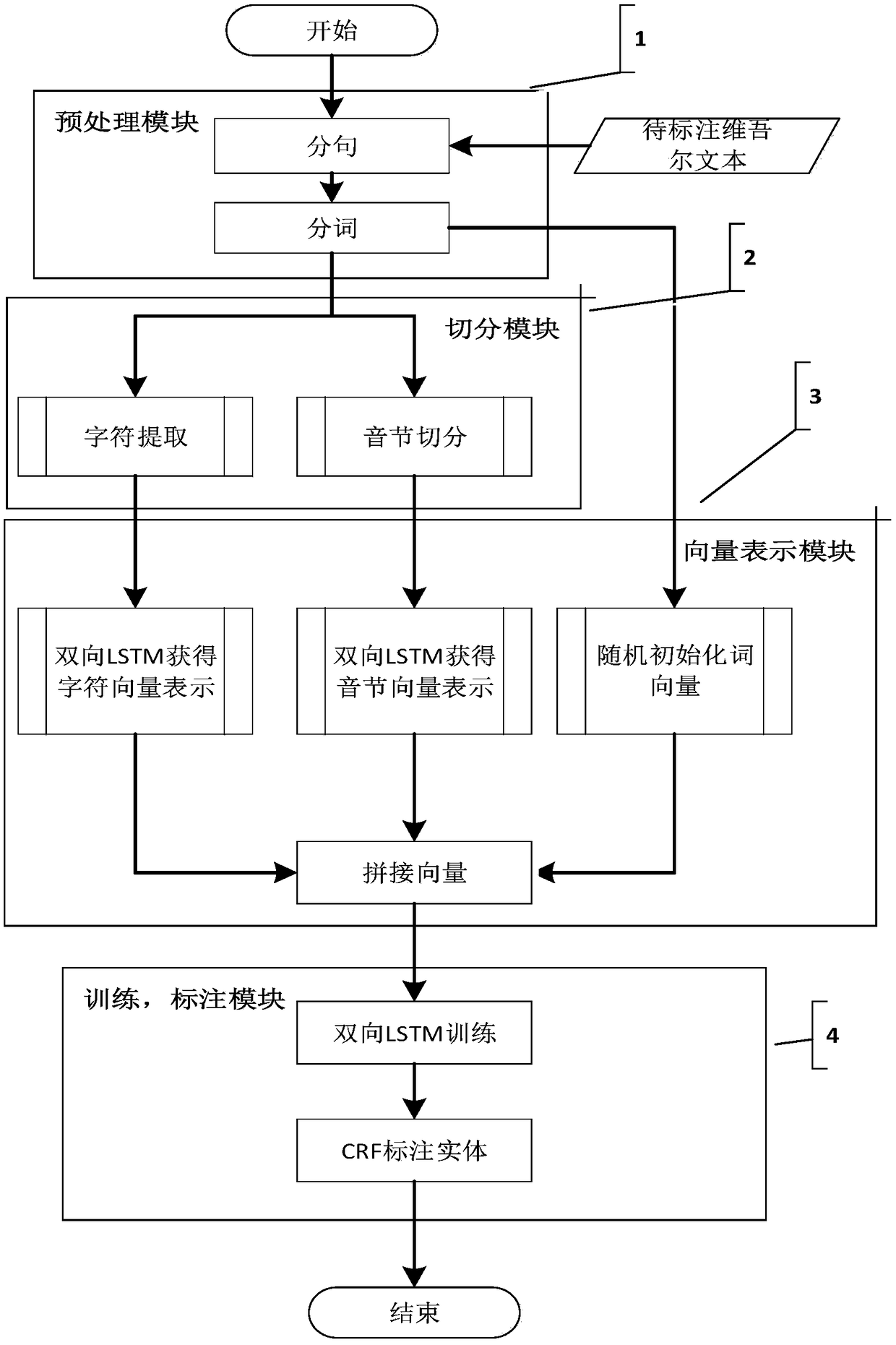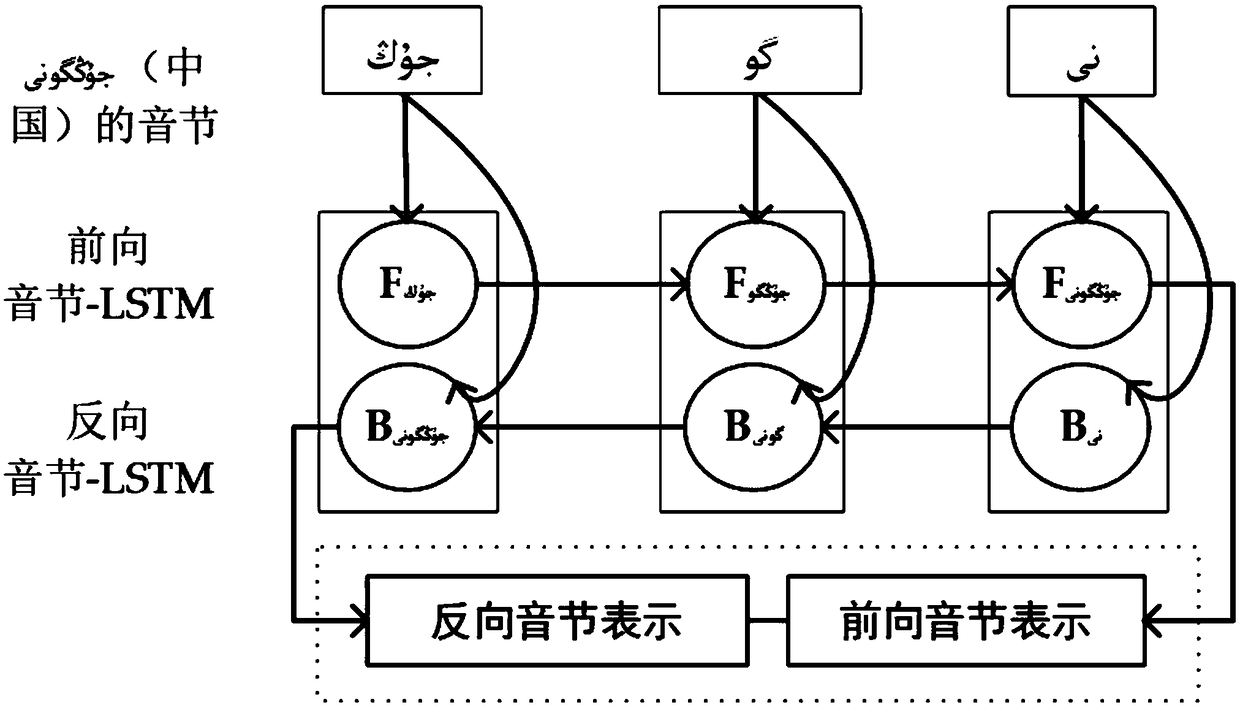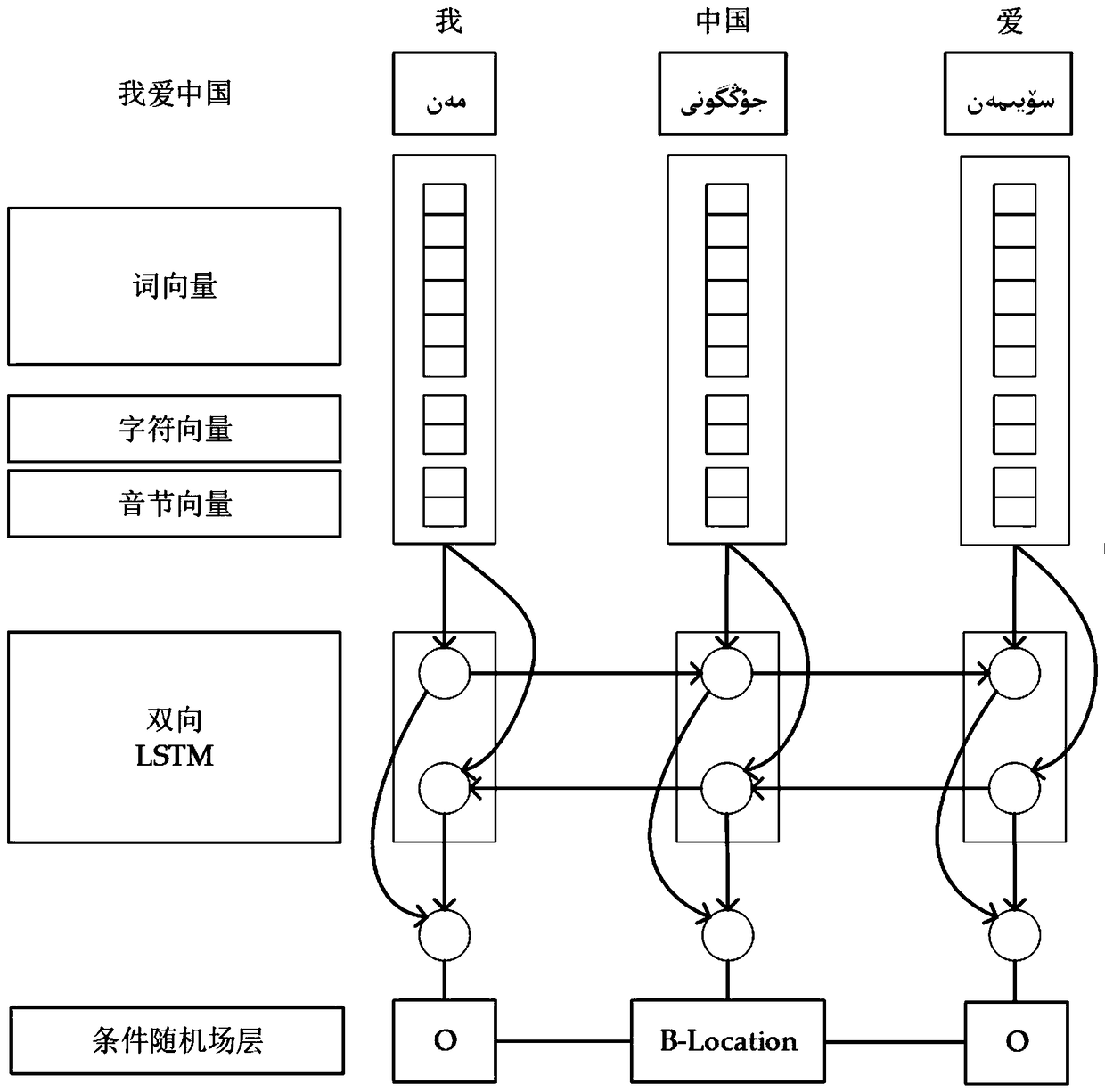Uyghur named entity recognition method based on depth learning
A technology of named entity recognition and deep learning, applied in the fields of instruments, computing, electrical digital data processing, etc., can solve problems such as inability to meet application requirements, and achieve the effect of solving named entity labeling problems and a wide range of application scenarios.
- Summary
- Abstract
- Description
- Claims
- Application Information
AI Technical Summary
Problems solved by technology
Method used
Image
Examples
Embodiment Construction
[0024] As shown in the figure, the Uighur named entity recognition method based on deep learning of the present embodiment includes the following steps:
[0025] (1) Carry out sentence segmentation and word segmentation for the Uighur text data to be marked, and perform character extraction and syllable segmentation for words;
[0026] (2) Use a bidirectional LSTM network to obtain forward and reverse character vectors respectively for the extracted characters, and splice them together to form a character vector representation of words;
[0027] (3) Use a bidirectional LSTM network to obtain forward and reverse syllable vectors respectively for the segmented syllables, and splicing them together to form a syllable vector representation of words;
[0028] (4) Splicing character vectors, syllable vectors and word vectors and passing them to the bidirectional LSTM neural network to train the information features of the input sentences;
[0029] (5) Based on the output obtained i...
PUM
 Login to View More
Login to View More Abstract
Description
Claims
Application Information
 Login to View More
Login to View More - R&D
- Intellectual Property
- Life Sciences
- Materials
- Tech Scout
- Unparalleled Data Quality
- Higher Quality Content
- 60% Fewer Hallucinations
Browse by: Latest US Patents, China's latest patents, Technical Efficacy Thesaurus, Application Domain, Technology Topic, Popular Technical Reports.
© 2025 PatSnap. All rights reserved.Legal|Privacy policy|Modern Slavery Act Transparency Statement|Sitemap|About US| Contact US: help@patsnap.com



